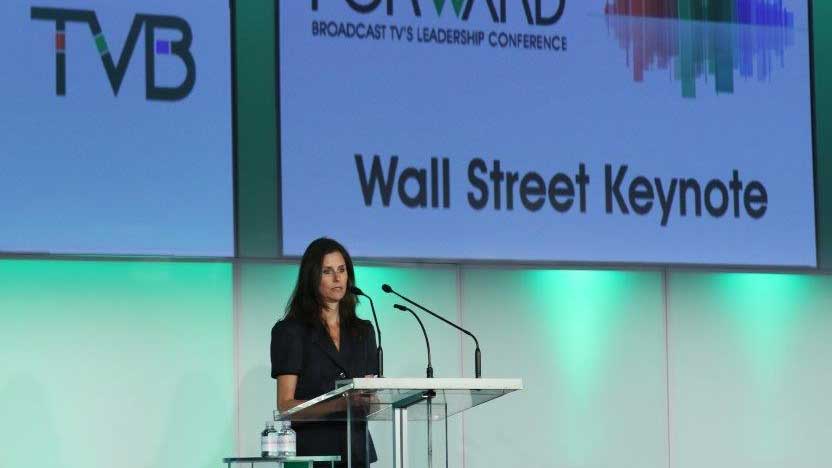Ryvicker: Despite Trump Misses, Broadcast Stocks Will Rise

New York – Broadcast stocks, riding high after Donald Trump won the presidential election and down when the benefits of one-party control of the presidency, House and Senate didn’t come fast enough, should be on the rise again with a little help from two traditional catalysts, retransmission consent and consolidation, Wells Fargo media analyst Marci Ryvicker told an industry audience Thursday.
Speaking at the TVB Forward conference at Chelsea Piers, Ryvicker said broadcast stocks were up between 25% and 35% from Nov. 9, the day after Trump defeated Democrat Hillary Clinton, and the end of the year. But that bubble soon burst after investors feared the expected benefits of Republican control of the major branches of government – tax reform, deregulation and an open attitude toward mega-deals – didn’t materialize fast enough.
The flood of merger and acquisitions, always a catalyst to broadcast stocks, didn’t come either, she said, adding that the lone major broadcast deal – Sinclair broadcasting’s pending $3.9 billion purchase of Tribune Media – has failed to excite the street.
In addition, she said developments outside the broadcast arena – especially pay TV subscriber losses – have had a negative effect on the stocks.
“We’ve also noticed over the last year there has been a significant correlation between the broadcast stocks and the big cap media stocks, even though their business models are very uncorrelated,” Ryvicker said. “Every time either Time Warner or Disney of Viacom talks about subscriber declines, everybody goes down.”
But Ryvicker expects that to change. The business benefits from the Trump administration will come – she is especially optimistic that local ownership rules will be relaxed – and outside factors like OTT and SVOD will actually prove to be beneficial to the stocks.
Ryvicker estimated that pay TV subscribers will continue to fall – from about 97 million in 2016 to 82 million by 2022, a 15% decline. But she said virtual MVPDs will take up most of that slack – rising from 1.86 million customers in 2016 to 15.9 million by 2022. She also pointed to the commercial launch of Hulu Live, which includes local broadcast stations, and Amazon Channels as potential catalysts.
“Broadcast is in the bundle,” she said, adding that retransmission consent revenue will be “totally fine.”
Ryvicker also believes that the biggest catalyst for further M&A in the sector will be the completion of the Sinclair-Tribune deal, followed by the relaxation of local ownership rules. And the upcoming Winter Olympic Games, political contests and the Super Bowl should fatten local advertising coffers in 2018.
“I like deregulation, I like market forces, let the market decide who’s going to win and who’s going to lose,” Ryvicker said. “To me, it’s a game of survival of the fittest.”
The smarter way to stay on top of broadcasting and cable industry. Sign up below
